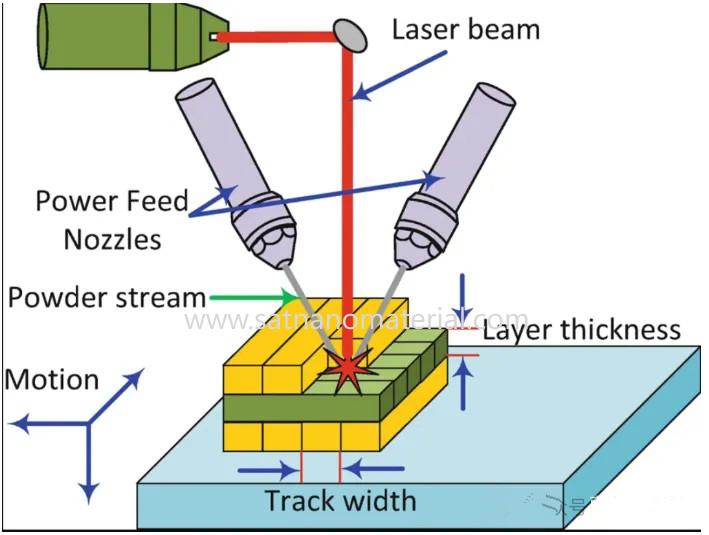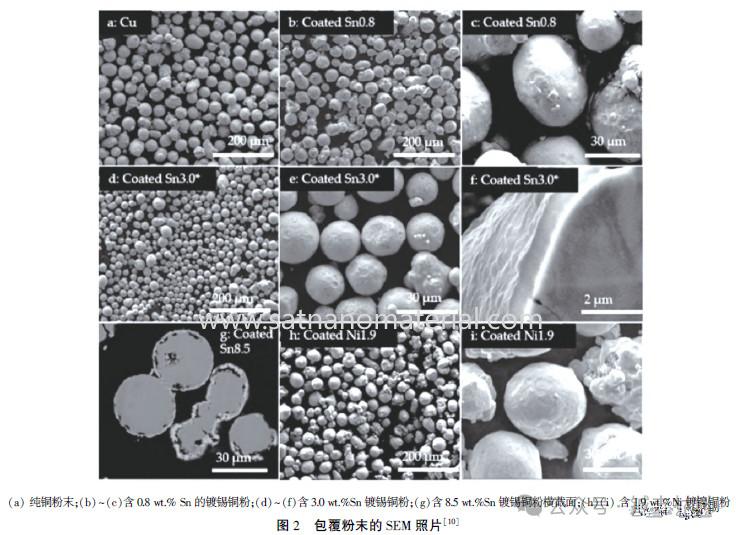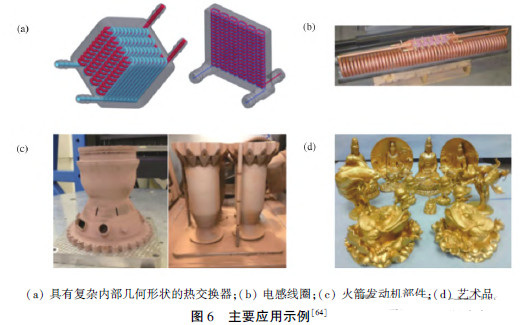Copper powder and
copper alloys powder have excellent physical and chemical properties, such as high conductivity, thermal conductivity, and corrosion resistance, and are widely used in the power industry, thermal management systems, nuclear power plants, and aerospace industry. High strength, wear-resistant, and corrosion-resistant copper alloys are used for automotive parts and daily necessities.
This article introduces the types and preparation methods of copper and copper alloy raw material powders used for additive manufacturing (AM), and summarizes the current status of AM technology for copper based parts at home and abroad. The process flow and advantages and disadvantages of different AM methods were emphasized, and the technical difficulties and corresponding solutions affecting the quality of parts were analyzed. The development direction of AM technology for copper based parts was also discussed.
AM technology is a new method for preparing parts based on layered slicing and discrete data of the 3D model of the part, and by accumulating materials layer by layer. Compared with traditional manufacturing methods, AM technology has advantages such as high design freedom and short production cycle, making it suitable for 3D printed parts with complex shapes, lightweight or multifunctional gradients

Atomized copper and copper alloy powder
The atomization method pulverizes metal melt into particles with a size less than 150 μ m through mechanical means. The microstructure of metal powders obtained by different atomization processes varies, including spherical, sponge like, spherical, and flaky shapes.
Copper and copper alloy additive manufacturing process

Coated powder
Coating powder improves its properties, such as conductivity and ductility, by coating other metals or alloys on the surface of copper powder. For example, Figure 2 shows different components

The main AM processes include selective laser melting (SLM), electron beam melting (EBM), binder jet (BJ), and powder extrusion printing (PEP)
1. Selective Laser Melting (SLM)
SLM uses laser beams to melt powder materials layer by layer, forming dense parts. Its advantages are high dimensional accuracy and fast deposition rate, but it requires high sphericity and flowability of powder materials.
2. Electron Beam Melting (EBM)
EBM uses electron beam to melt metal powder, which is suitable for preparing complex structured parts. Compared with SLM, EBM has higher energy utilization efficiency, but the equipment cost is higher.
3. Adhesive spraying (BJ)
BJ binds powder particles together by spraying adhesive, and then performs sintering treatment. Its advantages are low cost and high output, but the process involves multiple steps and the operation is complex.
4. Powder Extrusion Printing (PEP)
BJ binds powder particles together by spraying adhesive, and then performs sintering treatment. Its advantages are low cost and high output, but the process involves multiple steps and the operation is complex.
Main application examples
AM technology has a wide range of applications in various fields, such as heat exchangers, inductors, rocket engine components, and art. For example, NASA has developed rocket engine components with cooling channels printed using SLM technology.

SAT NANO is a best supplier of copper powder, copper alloy powder for 3D printing, we can supply 5um, 10um, 30um, if you have any enquiry, please feel free to contact us at admin@satnano.com
 13929258449
13929258449 13929258449
13929258449



 online service
online service 13929258449
13929258449 admin@satnano.com
admin@satnano.com led_zhiding
led_zhiding + 8613929258449
+ 8613929258449